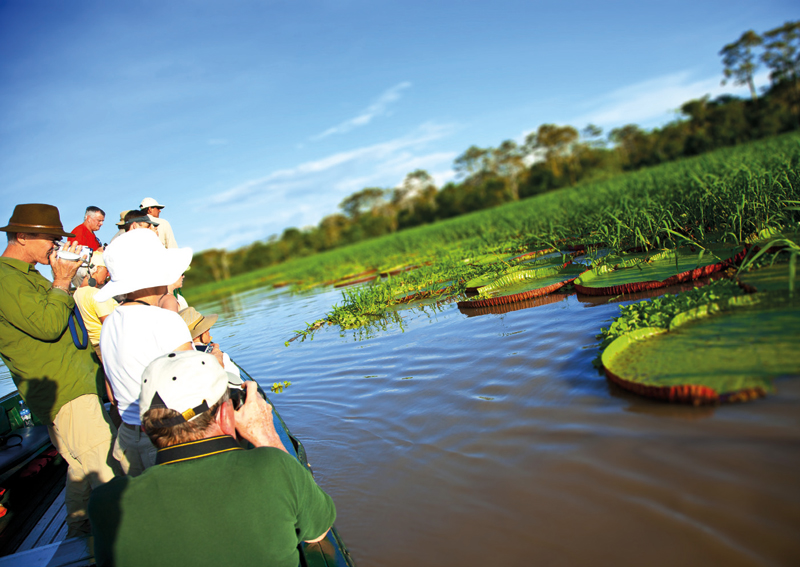Discover the mysteries of the cloud forest with the world’s greatest biodiversity and countless possibilities for ecotourism

Al though littl e known, Peru is also home to a great portion of the Amazon forest. To experience it, you must travel north, close to the border with Ecuador. As a matter of fact, Peru occupies 11.2% of the 7.35 million km2 of the Amazon River basin and is home to the source of the mighty Amazon River.
As we all know, the Amazon is the largest virgin forest on the planet, one of the most biodiverse ecosystems in the world. There are many lodges in the region where you can drop your gear and enjoy a comfortable stay, and discover for yourself not so much what the jungle looks like – we’ve all seen photographs and documentaries – but more interestingly what it sounds like, especially at night, when thousands of monkeys, birds and who knows what other nocturnal animals go out hunting.
You could very well spend weeks in the Amazonas region, there’s so much to do. For example visiting the source of the Amazon River and the Pacaya Samiria National Reserve, where you might see the planet’s tiniest monkey, the impossibly cute pygmy marmoset, which you could hold in the palm of your hand.
Another must during a visit in this region is of course to take a boat trip on the Amazon River, especially to cruise down to the Three Borders’ Point, where the borders of Peru, Brazil, and Colombia meet. Other cruises of a more naturalistic nature take you down the Marañon or the Ucayali as far as the border of the Pacaya Samiria National Reserve, which you enter by way of smaller boats or hiking through the jungle.
Moving towards the south is the department of Madre de Dios, with its majestic, virgin forest. Its capital, Puerto Maldonado, is considered the world capital of biodiversity. From there, you can visit the Manu National Park, spread out over some 2 million hectares, home to an unparalleled number of species.
Moving further south, you should try out one of the lodges on the Tambopata River or on the shores of the Lake Sandoval, where native communities still strive. As you penétrate further into the Tambopata basin, you will cross into the confines of the Bahuaja Sonene National Park, where you will be able to see thousands of multi-colored parrots circling above your head in the bright blue sky. In fact, the great valley of the Amazon is home to a dazzling array of some 950 species of birds.
0 COMMENTS